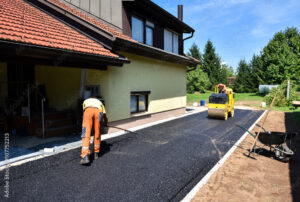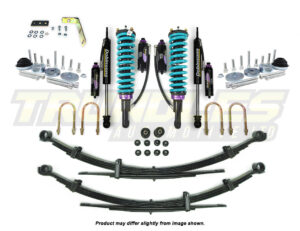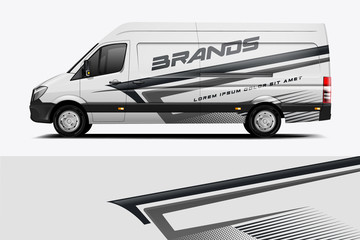SC Driveway Paving Charleston can increase a home’s value and make it more appealing to buyers. However, the paving process is complex and requires specialized skills and heavy equipment to complete successfully. Choosing the right material is key for a residential driveway paving project. Consider factors like load requirements and climate when selecting your fabric.

The cost of driveway paving depends on the type and material used. For example, concrete costs between $4 and $8 per square foot and can be customized with borders, patterns, or custom finishes. It is long-lasting, can withstand heavy vehicles, and is susceptible to discoloration and cracking. Asphalt, a cheaper option, typically lasts 15 to 20 years and can be repaired. Choosing a material that can withstand the climate of your area is important. For instance, asphalt doesn’t hold up well in colder weather and can be prone to frost damage. Gravel is another inexpensive option but can be soft on hot days and is prone to erosion in rainy conditions.
If you want a durable and attractive driveway, consider paving stones. These are natural or manufactured and come in various colors, shapes, and sizes. They are also eco-friendly and can be installed in a variety of ways. For instance, laying them in a herringbone pattern can add visual interest to your driveway.
Another important factor is the thickness of your pavement. For best results, the material should be at least 4 inches thick. In addition, it should be compacted and graded for proper drainage. Ask your contractor if you need help determining how wide to go.
You should also ensure your driveway is free of rocks and roots. If you have trees or shrubs in the area, they should be moved to a location away from the driveway to prevent root damage. Lastly, a paved driveway should be graded for proper drainage to avoid water pooling around the structure’s base.
Other factors that may increase the cost of a paving project include installation on a slope or in an odd shape and dealing with landscaping or drainage issues. In addition, homeowners should budget for labor, ranging from $500 to $2,000 for a standard double driveway. It includes clearing, grading, and installing butt joints. Choosing a contractor with experience in the field and who can provide references from previous clients is essential. Lastly, homeowners should always get proposals from multiple contractors to ensure they bid on the same specifications.
For your driveway paving to last as long as possible, the quality of the sub-grade layer is essential. This layer is the foundation of the whole paving job, and it should be strong enough to withstand the weight of paving equipment. It’s best to hire a professional contractor who can properly compact the base of your driveway. In addition, proper drainage is crucial to the durability of your driveway paving. Water should never stagnate on or near the pavement edges. Installing a gutter system to divert water from your pavement is also a good idea.
The most durable driveways are concrete, cobblestone pavers, and asphalt. These materials are tough and long-lasting, hold up well in any climate, require minimal maintenance, and add an elegant appearance to your home’s exterior. However, each material has its unique strengths and weaknesses.
Asphalt is economical and durable for your driveway paving, but it doesn’t last as long as other options. The average asphalt driveway only lasts 20 years. That is due to various factors, including weather conditions and contractor techniques. If you want a more long-lasting option, consider using a more premium paving surface, such as clay brick.
Concrete is durable and cost-effective for your driveway but can crack during the frost-thaw cycle in cold weather. In addition, it’s less environmentally friendly than other paving materials. Fortunately, it is easy to repair when cracked and can be replaced with new concrete.
Paving blocks are more eco-friendly than concrete, offering various color and design options. However, they can be prone to the growth of lichen that requires regular cleaning and treatment. Vigorous scrubbing can scratch the block surface and leave permanent marks, so using a mild cleaning product with low pH levels is important.
Another option is resin-bound aggregate, a hard-wearing course of resin mixed with clean, dry, decorative aggregates and hand-trowelled onto a new or existing base. Some resin-bound aggregate products are made from by-products and recycled materials to reduce their environmental impact as much as possible.
A driveway is more than just a place to park cars; it also forms part of the home’s entrance. Therefore, it is important that the driveway paving is durable and suits the style of your home. Paving contractors can install various materials, from gravel to pavers. Choosing the right material will ensure your driveway can withstand regular traffic and heavy vehicles. It will also be easy to maintain and keep clean. Moreover, it will increase the curb appeal of your property.
If you want a durable and attractive driveway, consider getting it paved with asphalt. This aggregate and liquid asphalt cement mixture is heated and applied to a subgrade. It is a popular choice because it can be installed quickly and is less susceptible to cracking from frost heaves. However, driving on is a bit noisy, and it will need to be resurfaced regularly.
Another option is a concrete driveway. It is a more expensive material but is highly resistant to cracking. In addition, it will last longer than a gravel driveway and require less maintenance. It is also easier to repair than asphalt and can be installed in layers rather than as a thick slab.
Before a new surface can be laid, the old one must be removed to the subgrade. Typically, the driveway will be excavated 12 inches below the final grade. It is the level at which structures like garage floors, sidewalks, and roads are expected to be once the driveway is completed.
Your asphalt driveway should be routinely sealed every three to five years. A good quality sealant will protect the pavement from weathering and oxidation while repelling oil spots and tire marks. It is also important to check that the drainage system is working properly. If it isn’t, water will pool on the pavement and create ruts and depressions. It can lead to costly repairs. In addition, it is a good idea to install drains in the transitional areas where your driveway meets the walkway to your front door and the street.
Driveways significantly impact the overall aesthetic of your property, so it is important to design them correctly. Many different paving materials are available, each with pros and cons. Some are better suited to certain climates and architectural styles, while others are more eco-friendly. When choosing a material, make sure you consider the cost and durability. Additionally, you should be aware of any drainage issues that could arise.
Before beginning the paving project, ensuring an adequate sub-grade layer is important. This layer is the base of the driveway and must be compacted to create a solid foundation. If the sub-grade needs to be improved, it will affect the longevity of your driveway.
Depending on the type of driveway you want, you may need to add extra soil or gravel to increase the stability of the surface. You should also consider the load requirements and drainage of your driveway. A good drainage system will prevent water pooling in the driveway and can help reduce weed growth. You can also use a permeable paver system to increase the aesthetic of your driveway while lowering maintenance costs.
A driveway paving contractor will assist you in choosing the right paver style, color, and texture to match your property. You can also select different border options and laying patterns to create a unique look for your driveway. Many homeowners add paver accents to the edges of their driveway to add more visual interest. Accent colors can complement your home’s trim or roof color.
Pavers are more expensive than asphalt but are more durable and offer a more natural appearance. In addition, they are easier to install, as they do not require a hot mix and can be laid directly on the ground. Pavers are also easy to maintain, and the surface is smoother than a traditional asphalt driveway.
When selecting paving material for your driveway, it is essential to consider the size of your vehicle and the number of cars you will be parking in the driveway. For instance, you will need a larger-sized paver for a car-and-trunk parking area. In addition, you will need to consider the location of your driveway within your yard and how it will connect to other areas of your property.

